A geo location-based mass commuter activity counter, incentivising citizens to walk as part of their commute, offering rewards for use with local businesses.
It helps public transportation providers to reduce overcrowding on their network during peak times.
Type
Service Design
Role
Research
Facilitation
Service Design
UX Design
Duration
6 Months
Team
2 Service Designer

The Client
Visa is a global payments technology company connecting and enabling consumers, businesses, banks and governments to use digital currency in more than 200 countries and territories worldwide.
Visa supports private companies, public transport operators and technology enablers to deliver digital payments acceptance in the Urban Mobility sector, transforming the passenger experience for millions of people worldwide.
In this self-directed project, we collaborated with the Visa Global Urban Mobility team of dedicated global strategists and regional implementation specialists to develop a concept to improve urban mobility.
The Challenge
Reducing overcrowding on the public transportation network in urban environments during peak hours.
The Final Concept
A geo location-based mass commuter activity counter, incentivising citizens to walk as part of their commute, offering rewards for use with local businesses.
It helps public transportation providers to reduce overcrowding on their network during peak times.
The Approach
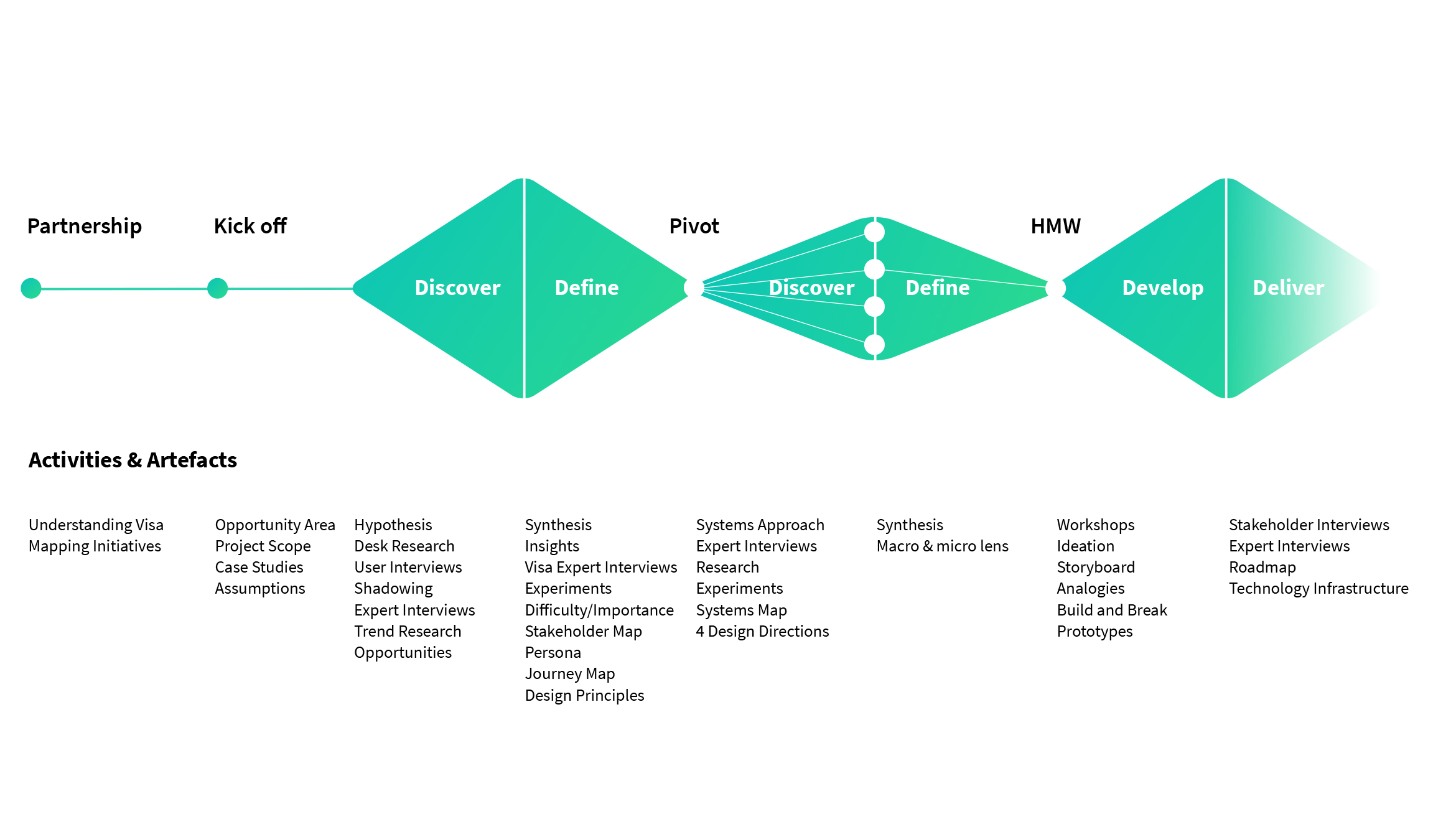
A remote Service Design project
Due to Covid-19 and the lockdown measures, we quickly adapted to remote work and collaboration for this project. This included developing remote facilitation skills using Miro and Zoom, conducting virtual discoveries and workshops with experts, local shops, potential users, and finding innovative ways to prototype concepts.
Operating across three time zones (UK, Germany, and South Korea), we established new rituals and efficient communication methods. Throughout the project, we collaborated with senior experts at Visa, including the Global Head of Delivery - Urban Mobility, to validate our propositions. This experience has honed our creative and relational skills and significantly enriched our growth as designers amidst uncertainty.
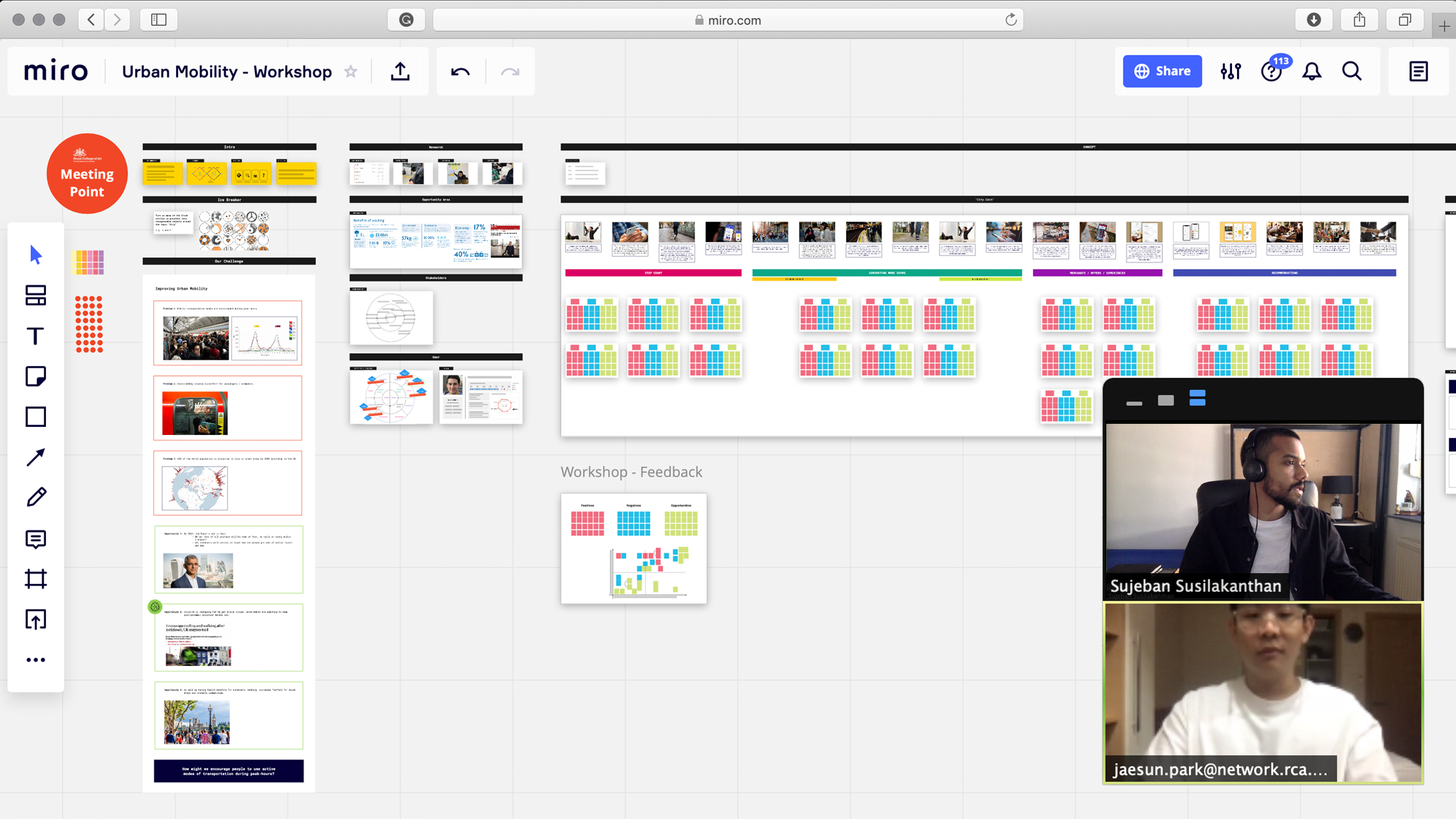
The Challenge
Overcrowding
Public transportation in urban environments is often overcrowded and congested during peak-hours as commuters travel to and from work.
As a result, this creates more discomfort and anxiety for passengers.

Demand Management
Transport providers are increasingly facing difficulties with their demand management, resulting in two peaks during a typical weekday.
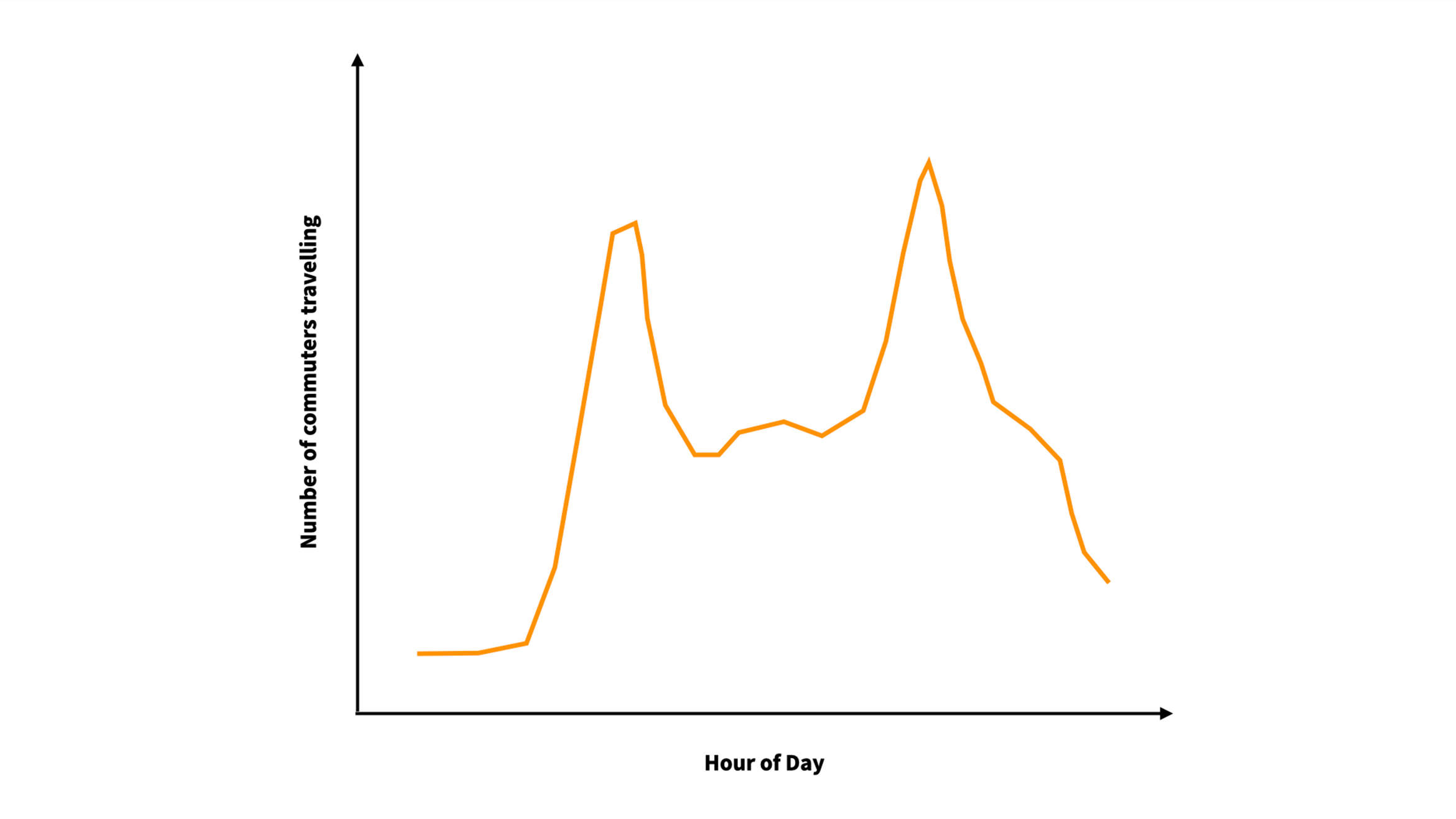
The Opportunity
Active Transportation in London
London would benefit a lot from citizens walking just 20 minutes a day. Especially in health, £1.6 billion could be saved in NHS healthcare costs. Environmentally, 57kg of carbon could be saved per year. It would also help the local economy, knowing that people who walk spend 40% more in town centres than car drivers.

Target Group
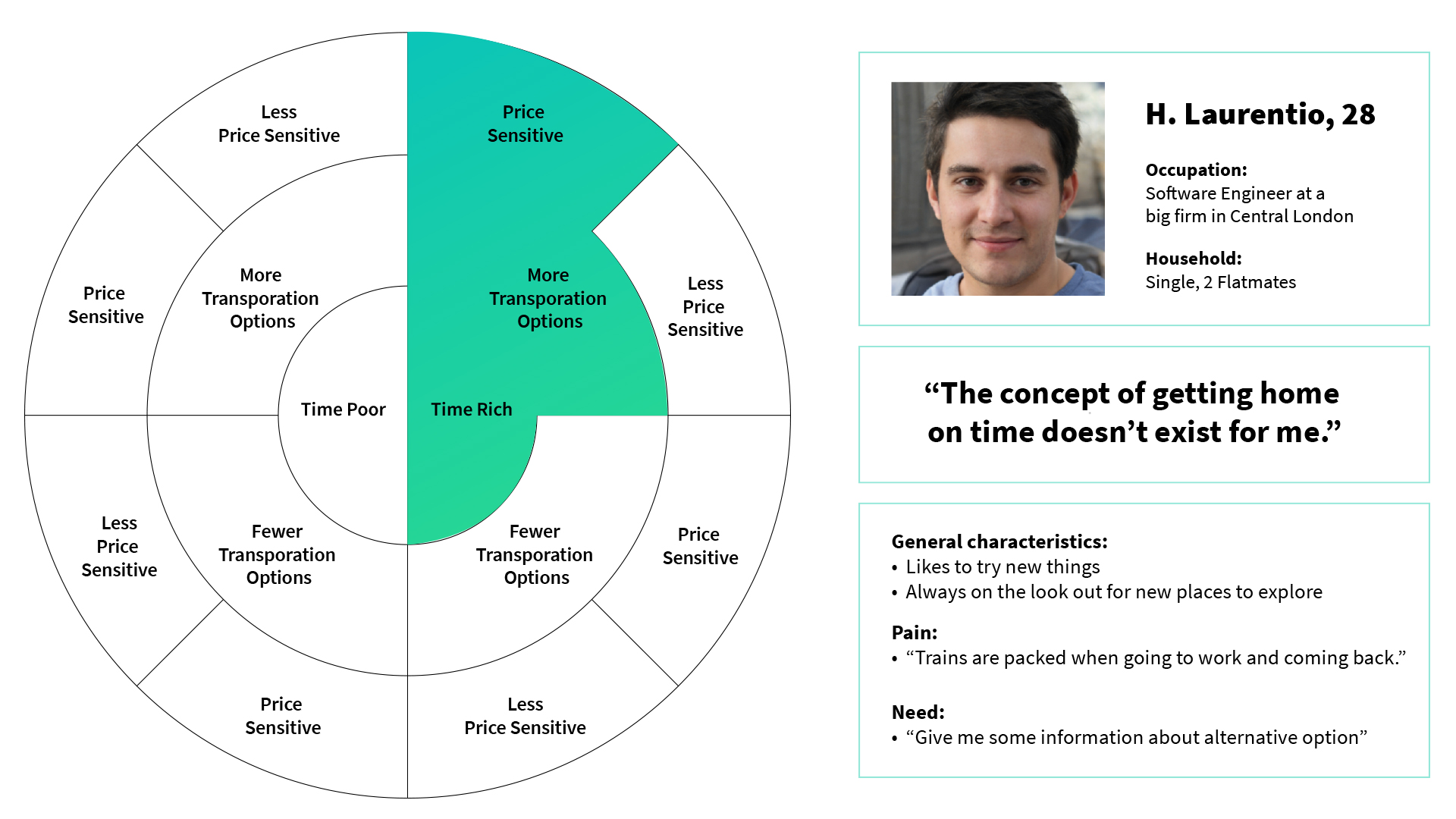
We categorized various types of commuters based on three parameters: time availability, transportation options, and price sensitivity. From this analysis, we identified eight distinct commuter archetypes. We prioritized those who have more flexibility in their schedule (time-rich), multiple transport options, and are price-sensitive. These commuters are more likely to delay their return home, opt for walking or cycling, and adjust their travel plans to save costs.
Our concept targets professionals who prioritise exploration over punctuality and enjoy trying new experiences and discovering new places.
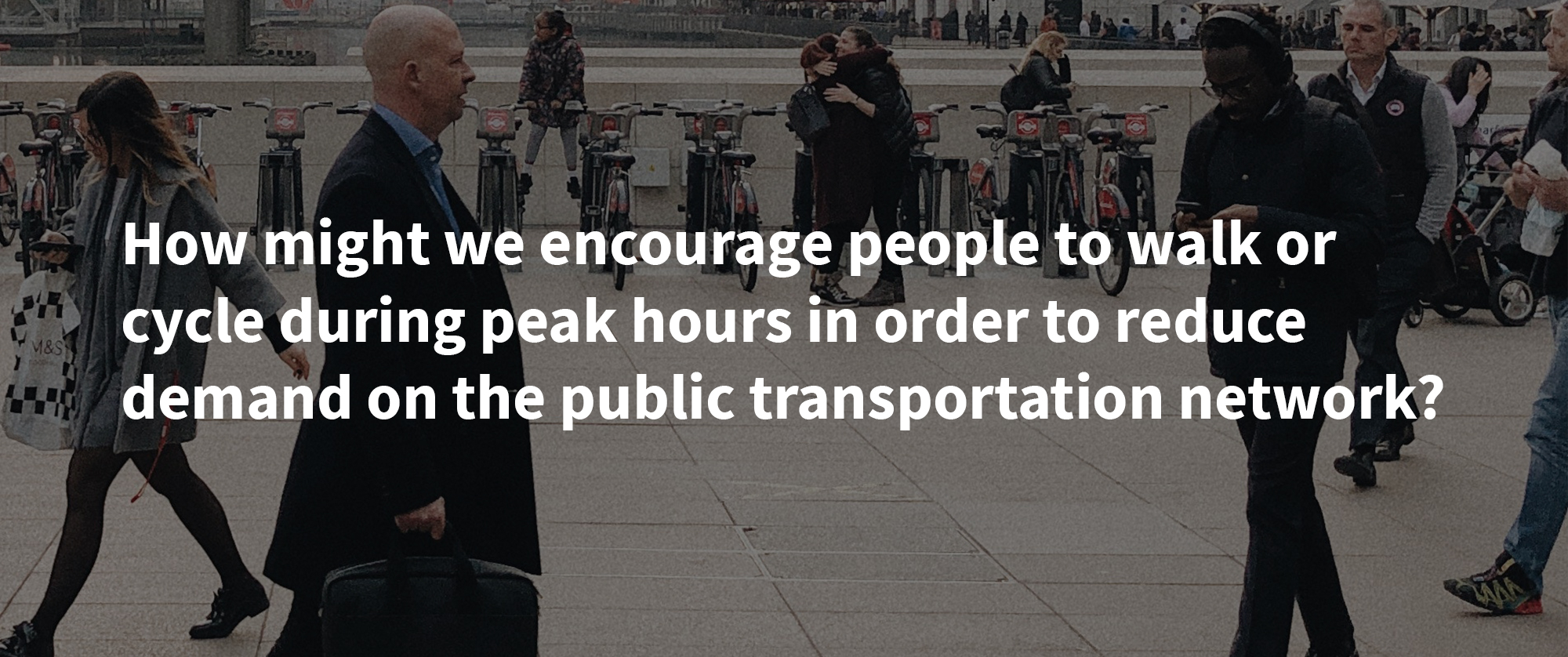
The Final Concept
Value Exchange
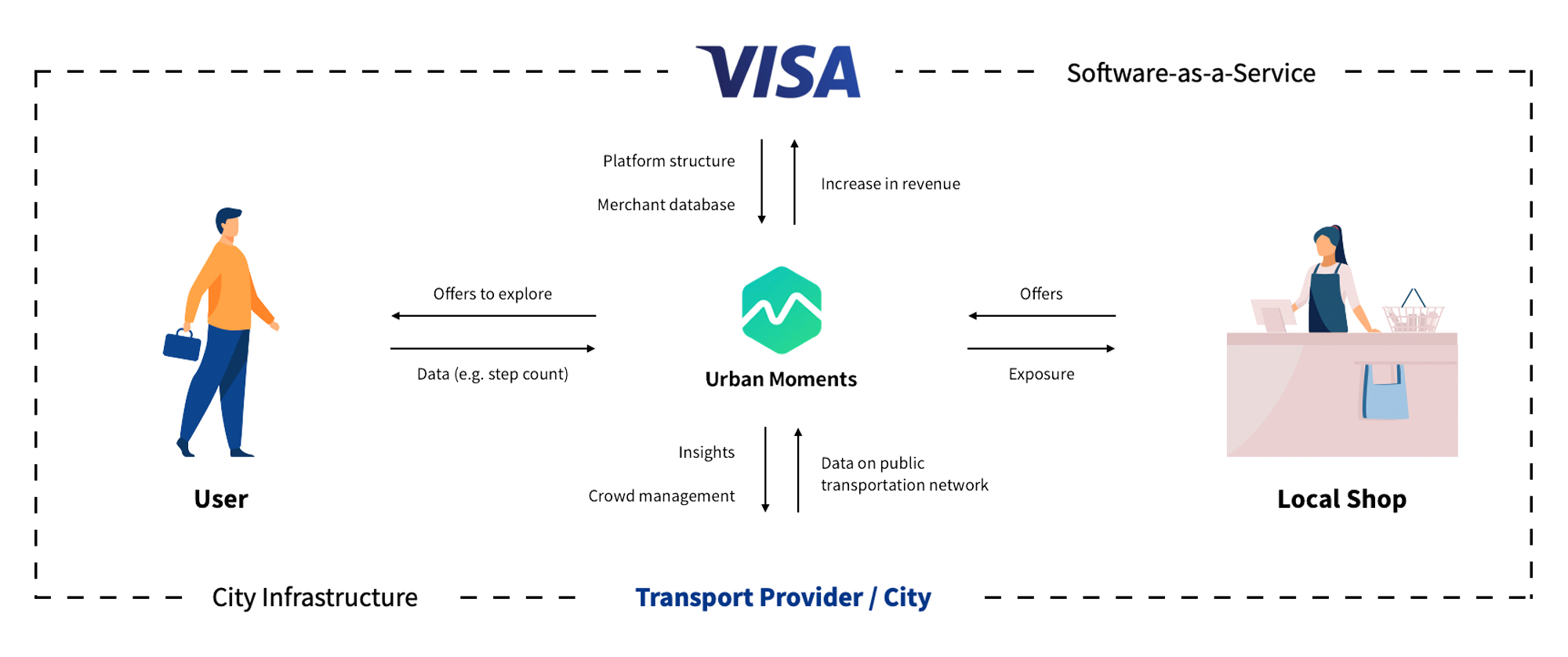
Core Features
Step Count
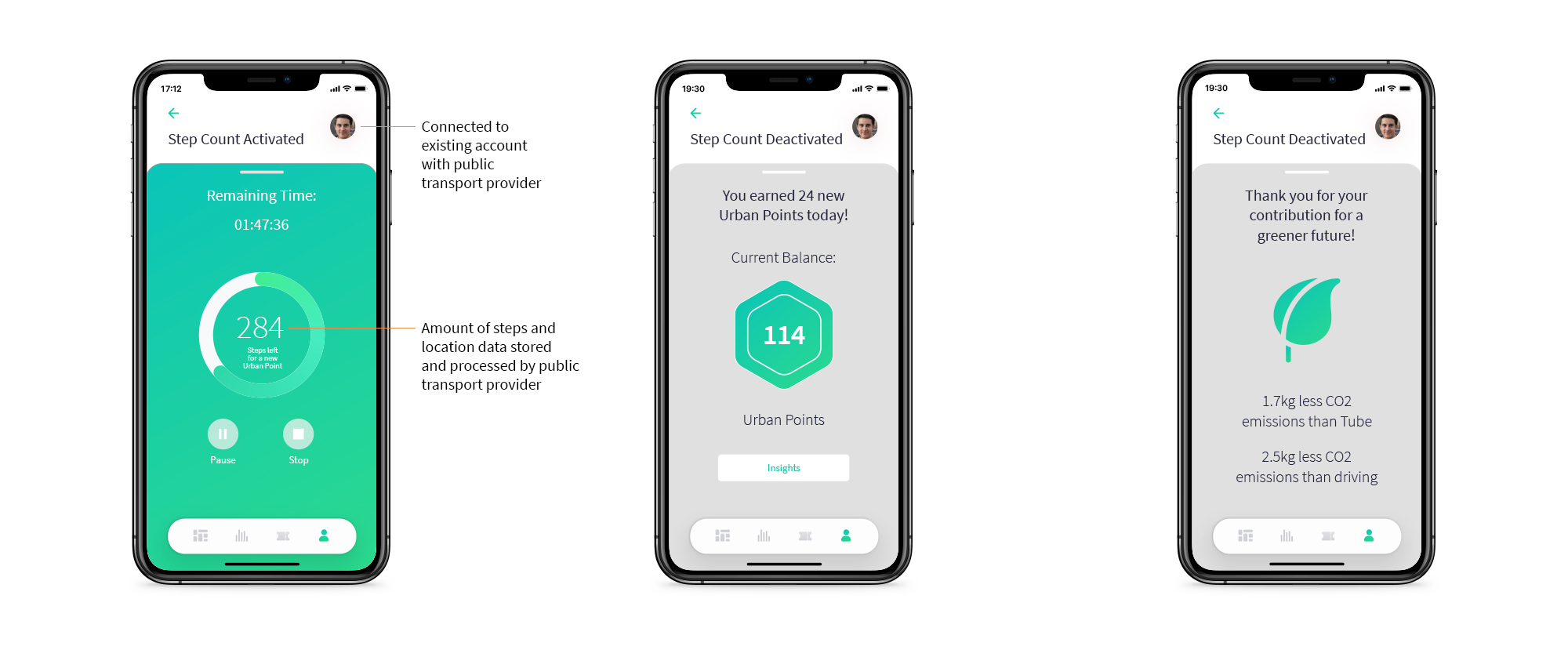
To access "Urban Moments", users log in using their existing transport provider account, allowing the provider to gain deeper insights into travel behaviours. Once users start walking during peak hours, their step count is automatically activated and converted into real-time "Urban Points". This data is securely stored and processed by the transport provider. Users receive updates on remaining peak hours and can pause or stop step counting as needed for privacy. At the end of peak hours, step counting automatically stops.
By clicking on "insights," users can view their contributions to reducing CO2 emissions, congestion, and other relevant factors.
Offers
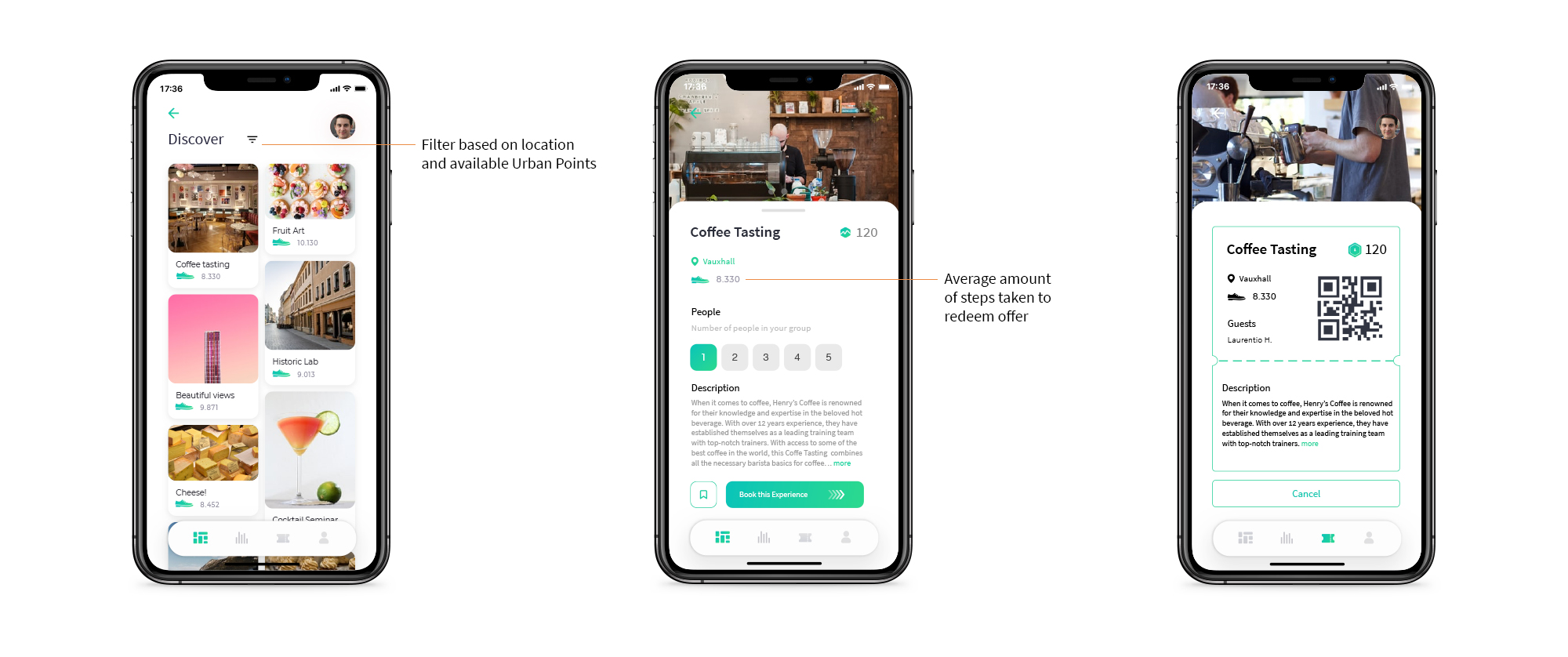
On the recommendations page, users can filter offers by their current location and available "Urban Points". They can also view reviews from other users about these offers. The system automatically tracks the steps required to redeem each offer. After selecting an offer, users receive a coupon that can be redeemed by presenting a QR code.
Local Shop
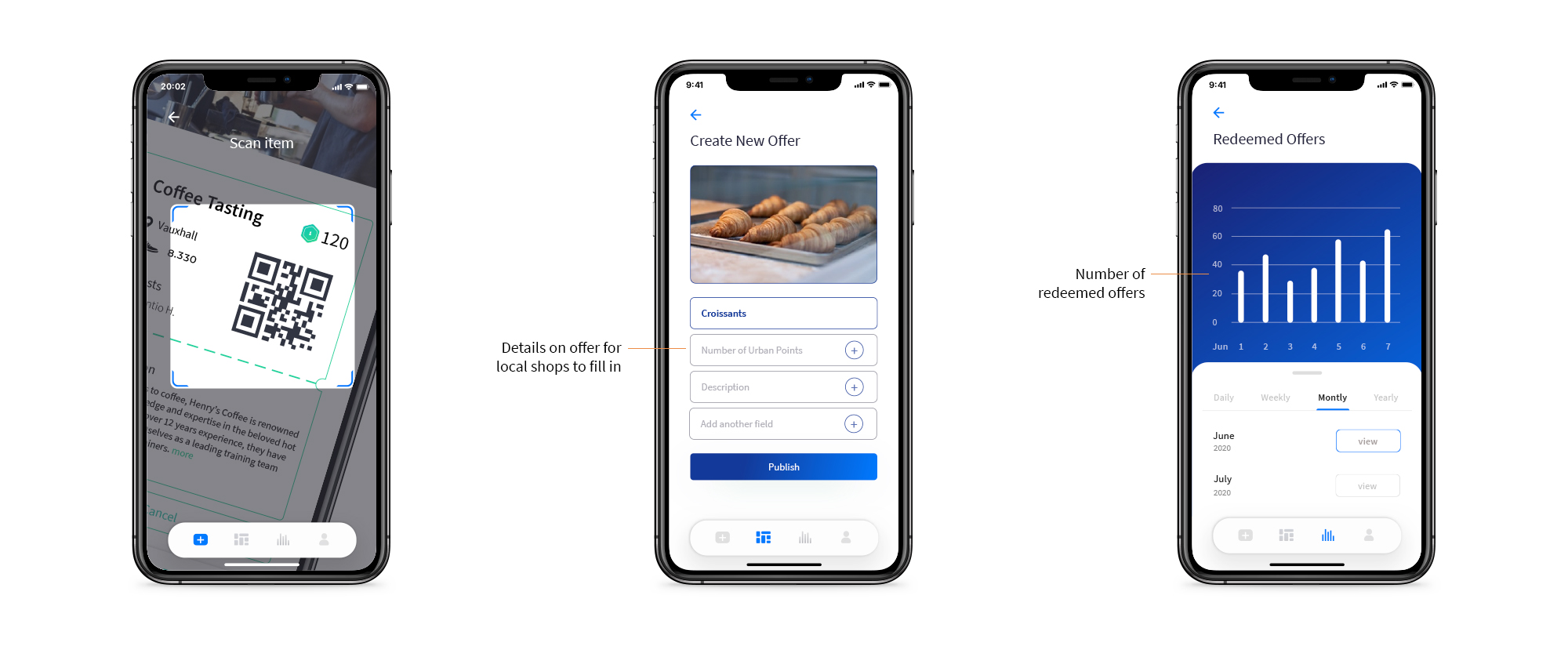
Local shop owners input their offer details and publish them on the platform to attract more customers. Using the app's scan function, shops validate coupons and provide the corresponding offers. The admin dashboard provides shop owners with an overview of their sales, including details on redeemed offers, revenue increases, new customers, and repeat purchases.
Post-pandemic

Once current Covid-19 lockdown measures ease and face masks and social distancing are no longer required, public transportation may initially experience reduced demand as people seek safer travel options. However, with increased marketing and incentives due to revenue pressures, demand for public transportation and ride-hailing services is expected to rebound. This presents an opportune moment to launch "Urban Moments" and integrate it into existing commuting routines.
"Urban Moments" will initially reward pedestrians and cyclists for their behaviour and encourage exploration of local shops. Concurrently, ongoing investments in city infrastructure aimed at reducing post-pandemic pollution levels may further promote walking and cycling. This shift could alleviate peak-time pressures on public transportation networks, enhance passenger experiences, and contribute to a healthier, happier population.
Who is it for?
"Urban Moments" is designed to be implemented by transport providers and cities to alleviate overcrowding on public transportation networks during peak hours.
Summary
"Urban Moments" encourages citizens to incorporate walking into their commutes, promoting both health benefits and exploration of local shops in the city. It assists public transportation providers in alleviating peak-time overcrowding, often caused by commuters traveling to and from work.
More Projects

Port and Marine ManagementProfessional Experience - Experience-led Global Transformation
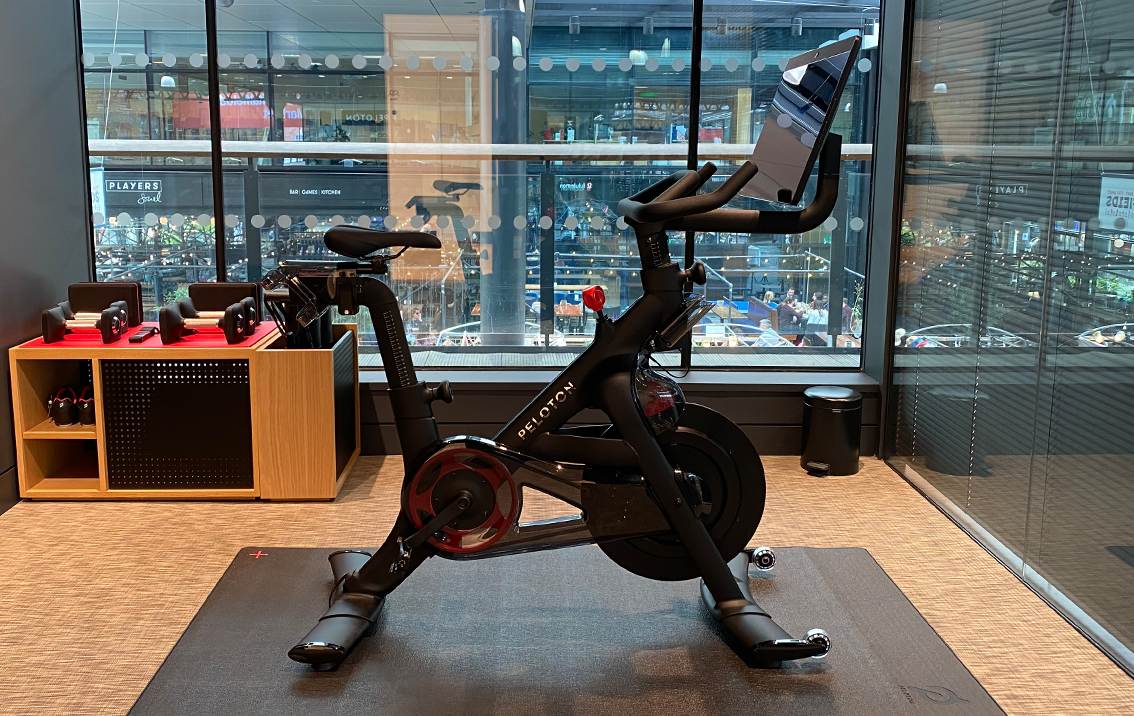
Connected FitnessProfessional Experience - International Operations and Member Experience
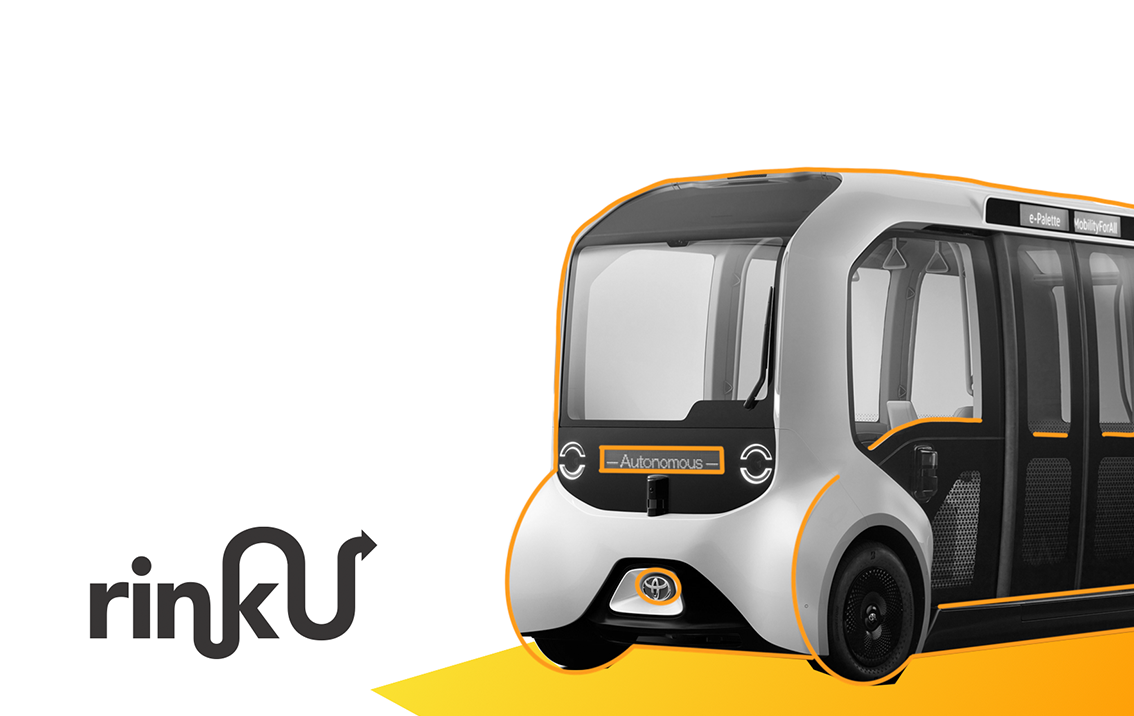
RinkU - ToyotaBusiness Innovation Design
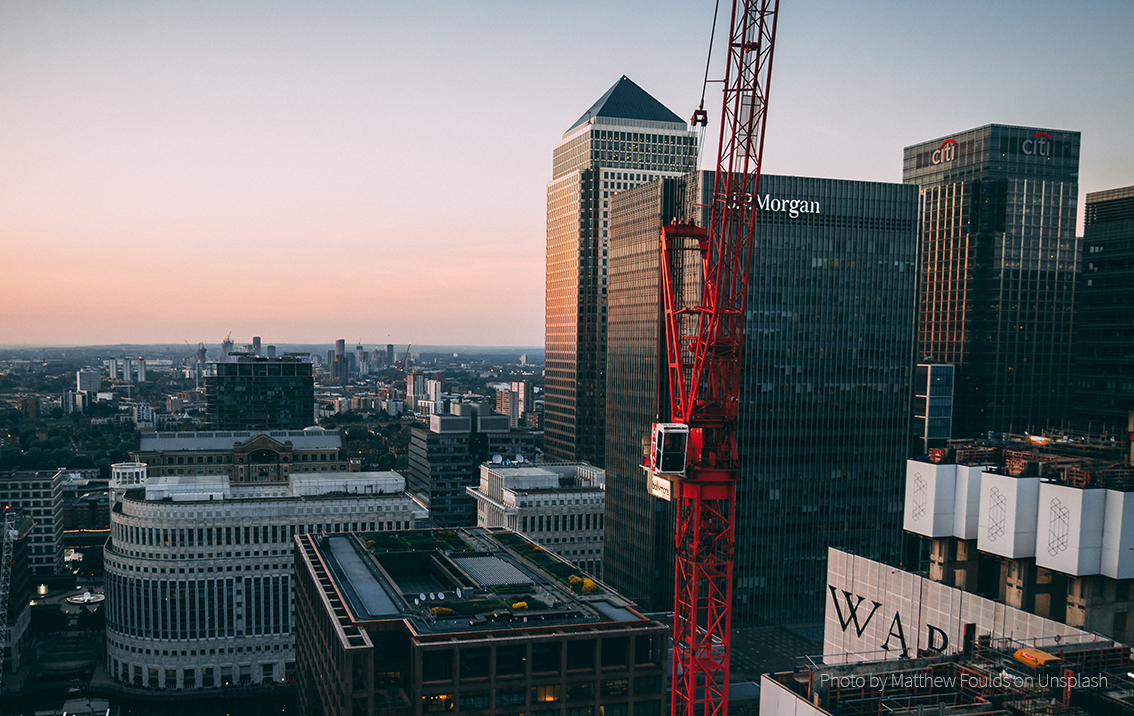
Financial ServicesProfessional Experience - Global Transformation
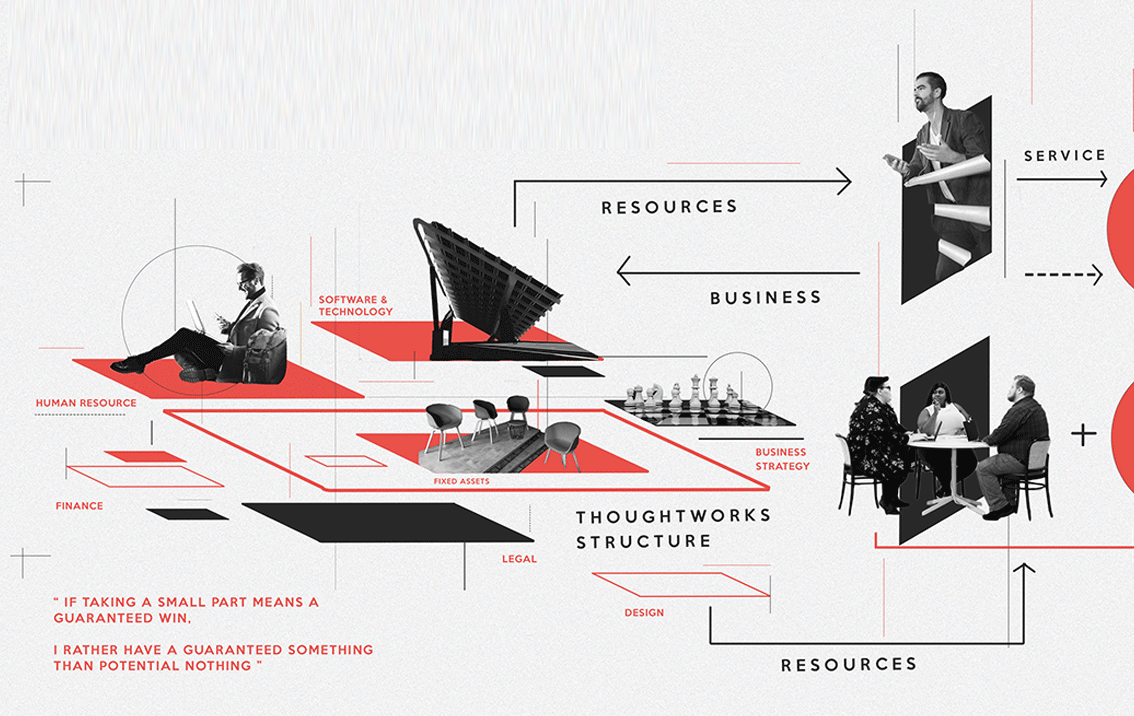
RoobiksService Design
Say Hello.
Say Hello.
Say Hello.
Sujeban Susilakanthan
London
United Kingdom
Sujeban Susilakanthan
HA2 8UA London
United Kingdom
Sujeban Susilakanthan
HA2 8UA London
United Kingdom
© 2025 Sujeban Susilakanthan. All rights reserved. Legal notice.
© 2022 Sujeban Susilakanthan. All rights reserved. Legal notice.
© 2022 Sujeban Susilakanthan.
All rights reserved. Legal notice.